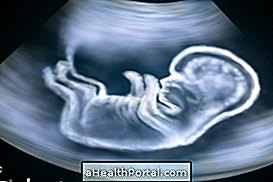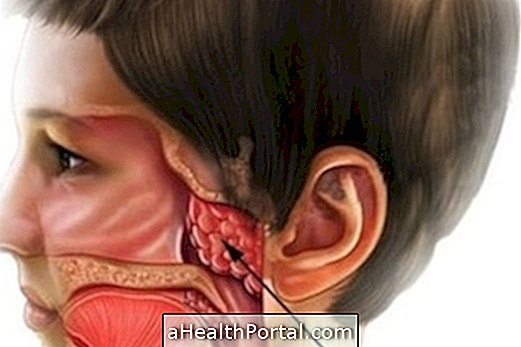The 6-month-old baby likes people to notice him and calls his parents to be with him. He turns toward the caller, strangers to strangers, and stops crying when he hears music. At this stage, the intelligence, reasoning and social relationship of the baby stand out, especially in interactions with parents or siblings.
At this stage, the baby likes to take everything that is within reach and brings everything to the mouth, to experience textures, flavors and consistency. Therefore, during this phase parents need to be careful, paying attention to what the baby puts in the mouth to prevent the baby from swallowing small things.

Baby weight at 6 months
This table indicates the ideal baby weight for this age, however, the weight may vary slightly, and the baby may have more or less weight.
| Boys | Girls | |
| Weight | 7.6 g | 7.3 g |
| Stature | 64 cm | 63 cm |
| Cephalic perimeter | 43 cm | 42 cm |
| Thoracic perimeter | 42.5 cm | 41.5 cm |
| Monthly weight gain | 600 g | 600 g |
In general, babies at this stage of development maintain a standard of weight gain of 600 g per month. If the weight is much higher than what we indicated here, it is possible that he is overweight and in this case should seek the pediatrician.
Sleeping baby at 6 months
The baby's 6-month sleep is refreshing and at this age, the baby may already be sleeping alone in their own bedroom. To do this, you should always leave a back-lit light on at night to make it easier for the baby to adjust, and leave the door open for the baby to feel calmer by feeling the presence of the parents.
Also, a teddy bear or a small cushion so he can hug and not feel alone can also help during this adjustment phase.

Development of the baby at 6 months
The baby at 6 months already begins to play hide his face with a diaper. In addition, the baby at six months already tries to vocalize vowels and consonants and parents should speak with him in adult language and not with words in the diminutive.
The baby's language is developing and the baby spends a lot of time babbling, and at this stage new consonants like Z, F and T begin to emerge slowly. Babies that babble more and with different tones demonstrate an excellent development of their intelligence. Learn more about how the baby's development is at 6 months by clicking here.
During this phase the baby already tries to roll in the bed and is able to sit when it is supported, being able to turn itself alone. In some cases of early development, the baby may even be able to sit alone without support.
It is also at this stage that because of the baby's responses they can identify other problems, such as hearing problems for example. Learn to recognize when your baby may have hearing problems in: How to identify if your baby does not listen well.
Watch the video to learn what the baby is doing at this stage and how you can help him develop faster:

Birth of teeth
The birth of teeth occurs at around 6 months and the front teeth, the central of below and below the top, are the first to be born. The symptoms of the birth of the first teeth may be agitation, decreased sleep, decreased appetite, dry cough, excess saliva and sometimes fever.
To ease the discomfort of the first teeth, parents can massage their babies' gums with their fingertips or give toys such as teethers to bite. See what to do to relieve the pain of the birth of teeth on How to relieve the pain of the birth of baby teeth.
Baby feeding at 6 months
At 6 months the baby should start eating soups and purees of vegetables and fruit jellies, so that they start to adapt to foods with different flavor and consistency. At this age the baby also has an intestinal maturity that allows him to digest food, and his stage of physical development also requires foods with nutritional value different from the milk that has been offered so far.
Feeding the baby at 6 months begins to differentiate and the introduction of new foods is part of not only their nutrition but also their cognitive development. A good way to start varied feeding is with the BLW method, where the baby begins to eat alone, holding the food with his or her hands. In this method all baby meals are with cooked foods that he is able to hold with his hands and eat alone. Here's how to do this kind of food introduction.

























